The ocean’s gentle giants, the Leatherback Sea Turtle, represent an ancient lineage uniquely adapted to thrive in a vast and challenging environment. These remarkable reptiles, the largest of all living turtles, are one of the most highly migratory marine animals and hold a special place in marine ecosystems and human imagination. This guide delves into the fascinating world of the Leatherback, exploring its biology, behavior, and the critical challenges it faces.
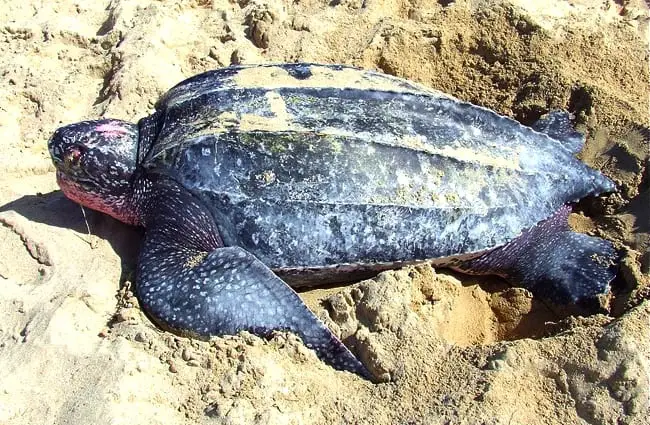
Anatomy and Physical Characteristics
Distinguished from other sea turtles by the absence of a hard, bony shell, the Leatherback’s carapace is composed of a mosaic of small dermal plates covered by tough, rubbery skin. This unique structure provides flexibility and allows the turtle to dive to incredible depths. Adults typically measure between 4 and 6 feet in length and weigh between 600 and 1,200 kilograms (1,300 to 2,600 pounds). Their coloration is generally dark gray or black with pale spots, providing camouflage in the deep ocean. A key feature is the seven prominent keels along its back, which help streamline its body for efficient swimming.
Habitat and Distribution
Leatherbacks have the widest global distribution of any reptile, inhabiting tropical and temperate waters of the Atlantic, Pacific, and Indian Oceans. They are highly migratory, traveling thousands of miles between feeding and nesting grounds. Primary nesting sites include beaches in Central and South America, parts of Africa, Southeast Asia, and the Caribbean. After hatching, young turtles enter oceanic currents and disperse across vast stretches of the ocean. Adults often follow jellyfish blooms, their primary food source, which dictates their movements.
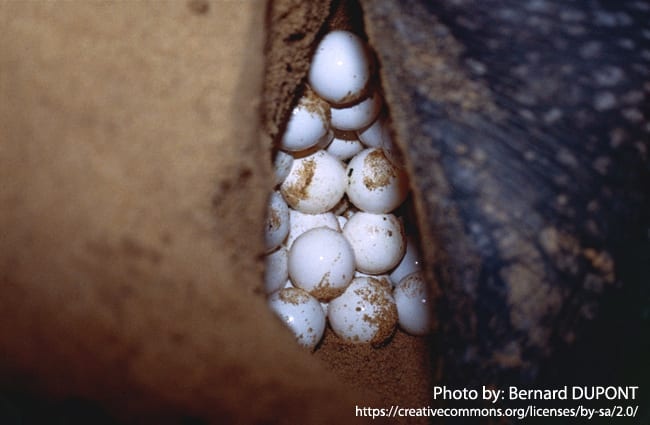
Finding Leatherbacks in the Wild
For those hoping to observe Leatherbacks, certain locations offer better opportunities. Costa Rica, particularly the beaches of Tortuguero and Ostional, are renowned nesting sites. In Gabon, Africa, Loango National Park provides another key nesting area. During the North Atlantic feeding season, waters off the coasts of Canada and the United States often attract Leatherbacks following jellyfish aggregations. Observation should always be conducted responsibly, maintaining a safe distance and avoiding disturbance of nesting females or hatchlings. Guided tours with experienced local operators are highly recommended.
Diet and Foraging Behavior
Leatherbacks are specialized feeders, with a diet almost exclusively consisting of jellyfish and other gelatinous zooplankton. Their mouths are not equipped with teeth but instead have spines and ridges that help them grasp and swallow these soft-bodied prey. They can consume large quantities of jellyfish, sometimes exceeding their own body weight daily. This specialized diet makes them important regulators of jellyfish populations, preventing potential blooms. The distribution of jellyfish significantly impacts Leatherback foraging patterns and migratory routes.
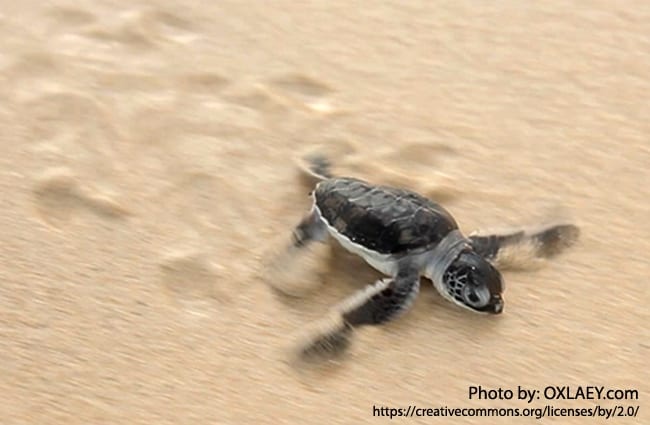
Reproduction and Life Cycle
Leatherbacks are oviparous, meaning they reproduce by laying eggs. After a complex mating ritual, females return to nesting beaches, often the same ones used in previous years. They excavate a deep nest in the sand, lay a clutch of approximately 80 to 120 eggs, and then carefully cover the nest before returning to the ocean. Incubation lasts around 60 to 70 days. Hatchlings emerge at night, guided by moonlight reflecting off the ocean surface. These tiny turtles face a perilous journey to the sea, vulnerable to predators such as birds, crabs, and mammals. Few survive to adulthood.
Evolutionary History
The Leatherback Sea Turtle represents a lineage that dates back millions of years. While definitive fossil records are sparse, the Dermochelyidae family, to which Leatherbacks belong, is believed to have diverged from other sea turtles during the late Miocene, around 25 to 30 million years ago. This ancient lineage has endured numerous environmental changes and faces unprecedented threats in the modern era. Its unique anatomy and physiology suggest a long history of adaptation to a pelagic lifestyle, foraging in the open ocean rather than near coastlines.
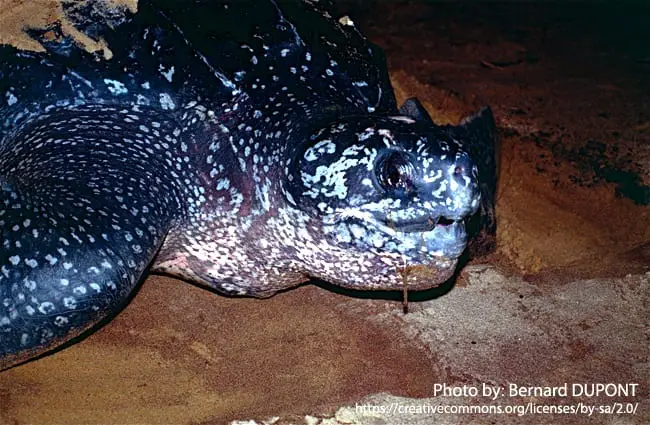
Ecological Role and Interactions
Leatherbacks play a crucial role in maintaining the health of marine ecosystems. By controlling jellyfish populations, they prevent imbalances that could harm other species. They also contribute to nutrient cycling, transporting nutrients from feeding grounds to nesting beaches. Interactions with other animals are varied. They are sometimes preyed upon by sharks and killer whales, particularly when young or injured. They also occasionally interact with fisheries, becoming unintentionally caught in fishing gear.
Human Impact and Conservation Status
Leatherback Sea Turtles are currently listed as Critically Endangered by the International Union for Conservation of Nature. Their populations have declined dramatically in recent decades due to a number of factors. Entanglement in fishing gear is a major threat, as is the loss of nesting habitat due to coastal development and erosion. Plastic pollution poses a significant risk, as turtles often mistake plastic bags for jellyfish. Climate change also impacts nesting sites and prey availability. Conservation efforts include implementing stricter fishing regulations, protecting nesting beaches, and reducing plastic pollution.
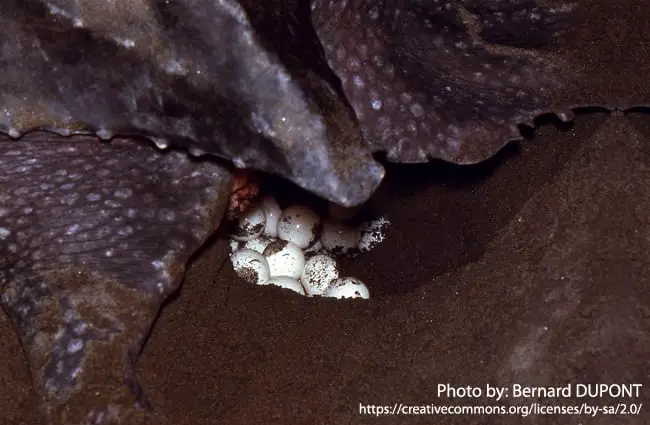
Cultural Significance
Leatherback Sea Turtles hold cultural significance for many coastal communities around the world. In some cultures, they are revered as symbols of longevity and resilience. Their eggs are considered a delicacy in certain regions, although this practice is often unsustainable. Traditional stories and art frequently depict these majestic creatures, reflecting their importance in local folklore.
Encountering a Leatherback in the Wild
If you are fortunate enough to encounter a Leatherback Sea Turtle in the wild, it is crucial to observe it from a respectful distance. Do not approach, touch, or attempt to interact with the turtle. Avoid shining lights or making loud noises, as this could disturb its natural behavior. Report the sighting to local authorities or conservation organizations. If you encounter a stranded or injured turtle, contact trained professionals immediately.
Caring for Leatherbacks in Captivity
Keeping Leatherback Sea Turtles in captivity presents unique challenges. Their large size and specialized diet require extensive facilities and resources. Tanks must be exceptionally large and well-maintained, providing ample space for swimming and diving. The diet must consist primarily of jellyfish, which can be difficult and expensive to obtain. Water quality must be carefully monitored to prevent infections. Enrichment activities are essential to stimulate natural behaviors. Experienced veterinary care is crucial to ensure the turtle’s health and well-being.
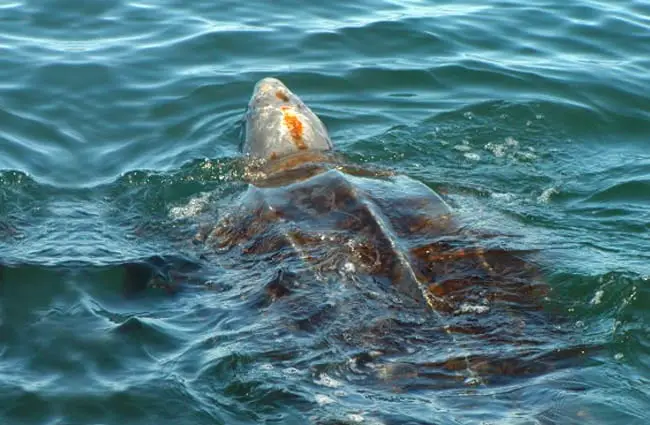
Fascinating Facts
- Leatherbacks can dive to depths exceeding 4,000 feet.
- They can hold their breath for up to 90 minutes.
- Their body temperature is lower than that of other sea turtles, allowing them to tolerate colder waters.
- They do not have a hard shell like other turtles; their carapace is leathery and flexible.
- They migrate thousands of miles each year following jellyfish blooms.
- Hatchlings are initially dark colored, becoming lighter as they mature.

The Leatherback Sea Turtle stands as a testament to the power of adaptation and the beauty of the natural world. Its survival depends on continued conservation efforts and a collective commitment to protecting the marine environment. By understanding and appreciating these remarkable creatures, we can ensure that they continue to grace our oceans for generations to come.

![Red Angus Closeup of a beautiful Red Angus cowPhoto by: U.S. Department of Agriculture [pubic domain]https://creativecommons.org/licenses/by/2.0/](https://animals.net/wp-content/uploads/2020/03/Red-Angus-4-238x178.jpg)

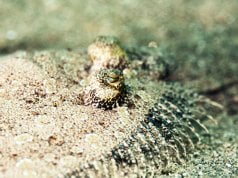
![Red Angus Closeup of a beautiful Red Angus cowPhoto by: U.S. Department of Agriculture [pubic domain]https://creativecommons.org/licenses/by/2.0/](https://animals.net/wp-content/uploads/2020/03/Red-Angus-4-100x75.jpg)

